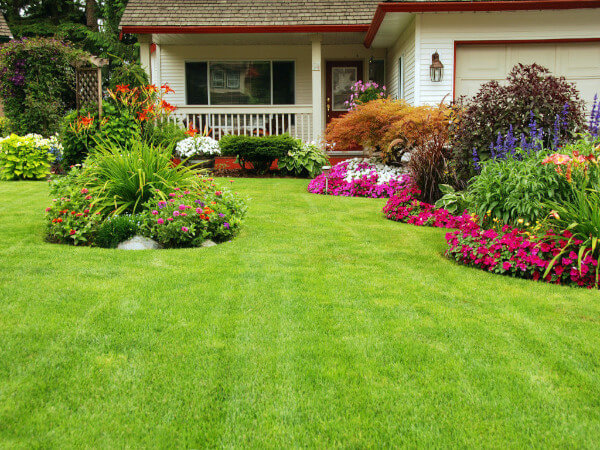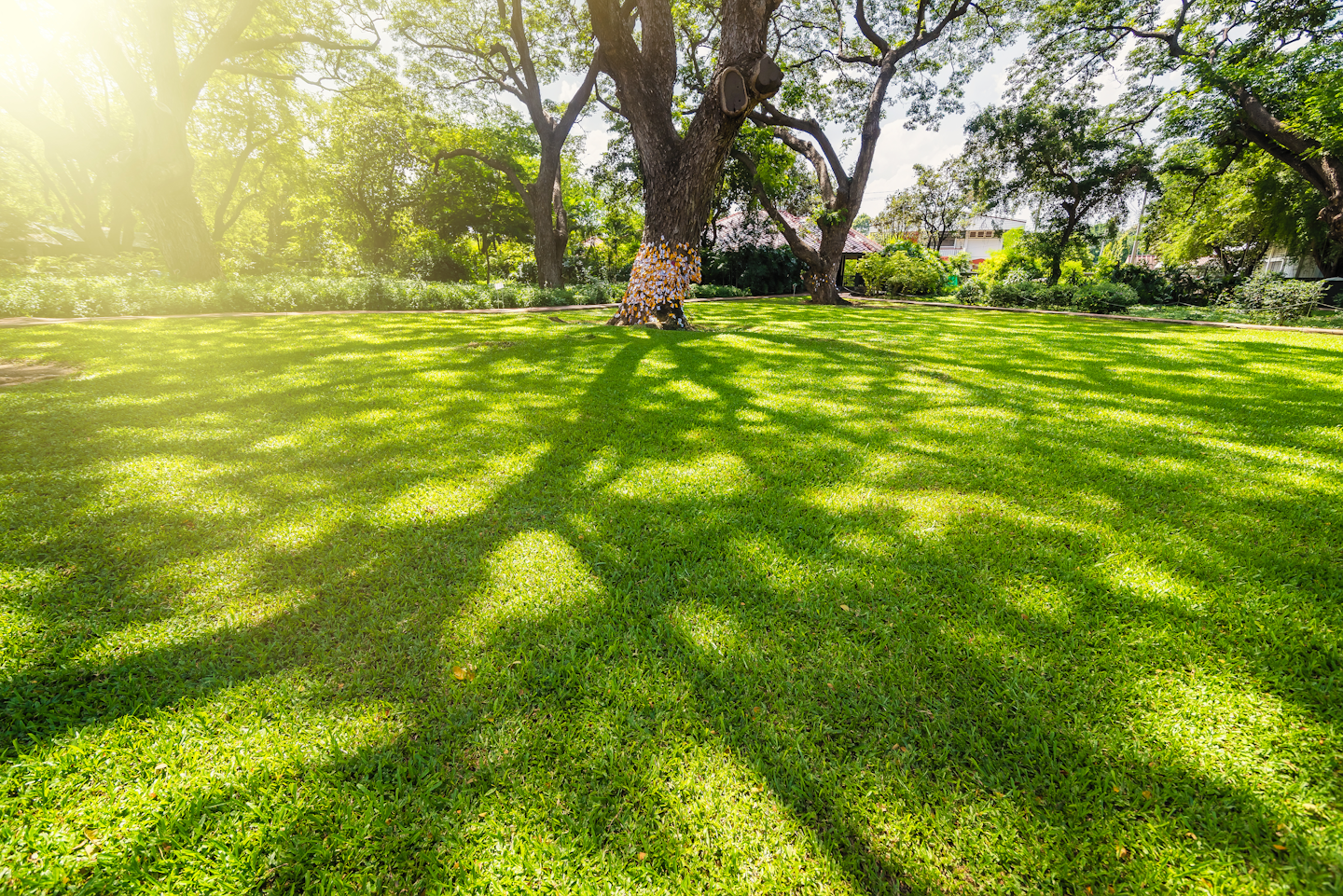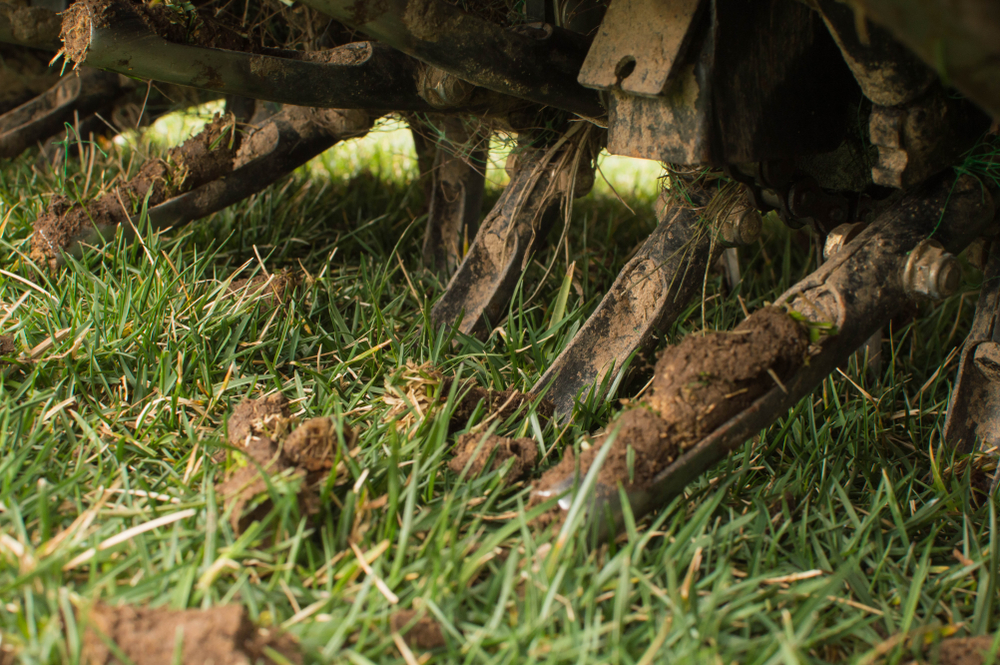
Fall lawn care: Tips to follow, mistakes to avoid

With fall now in full swing, you should be considering some lawn maintenance practices that can help your customer’s yard recuperate from the harsh summer heat and stay strong throughout the winter.
According to Brian Feldman, director of technical operations for TruGreen, the number one mistake made when it comes to fall lawn maintenance is assuming that irrigation is no longer necessary because of the season.
“Oftentimes, people think about irrigation purely in the summertime when it’s hot out, but the transition to the fall still offers the opportunity to irrigate,” says Feldman. “The grass is still growing and needs irrigation during that time, especially when there’s no rainfall.”
The second common mistake Feldman sees is proper mowing practices not being utilized. As a general rule of thumb, Feldman says lawns need to be mowed frequently enough that you’re not removing more than one-third of the grass blade in any individual mowing session.
When the lawn is left to grow too tall, Feldman says when you do get around to mowing it, you are essentially just scalping the turf at that point. This, he says, hurts the ability of the grass to recover as quickly.
Overlooking fallen leaves is another potential error.
“Don’t sleep on leaf cover,” Feldman says. “Make sure to rake up those leaves on a weekly basis once fall arrives. Leaves left unchecked over time can smother the grass by excluding light and airflow needed for normal growth. Ultimately, this can cause dead spots to develop in the lawn which won’t begin to recover until the following year.”
Whether you and your crews take care of fallen leaves or your customers handle them, be sure to remind customers that leaves will not naturally degrade if left out in the yard. If wet leaves are left to sit for long periods of time, Feldman says it can cause grass damage.
The value of aeration and overseeding
For customers curious as to why services such as aerating, fertilization and seeding are so effective when performed in the fall, Feldman says the start of the season offers optimal conditions for the grass to repair and establish itself.
He does warn against waiting too late into October and November, as the temperatures will only continue to drop. Clients often need to be educated on the importance of timing. According to some research from a national TruGreen survey found that 78 percent of homeowners who conduct aeration and seeding do it in the wrong season and 75 percent of homeowners with lawns don’t have it performed at all. But this is a really vital service.
“Fall is a great opportunity for cool-season grasses to start growing again because the temperature ranges are ideal for them to start recovering from the summer months,” says Feldman. “During that time, the grasses need fertility and care. As daylight starts to shorten, the plants are kind of in a recovery mode. It’s cooler because the photo period shortens versus the long days of summer.”

Photo: TruGreen
During this time of the season, Feldman says turf grasses put a lot of energy into their root systems, which is also why putting down fertilizer now will help keep the roots properly fed.
Feldman says this time of the year essentially serves as the storage time for the roots, as they will be actively storing up the necessary carbohydrates and sugars.
“By really growing and helping these roots expand through time and proper fertility, it helps the grass recover and aids in how it’s going to look in the spring,” says Feldman. “Properly fertilized turf in the fall breaks dormancy in the spring in a much better posture, so you’ll have green, thicker, more dense turf in the spring.”
Ideally, Feldman says you would perform these services in the order of aeration, seeding and then fertilizing, and he stresses the importance of getting the fertilizer down fast, as you don’t want to waste this premium time.
Feldman adds that this could also be a good time to perform a soil test and check the pH of your customer’s soil.
For customers asking about dethatching, he says not to stress over it if you’re dealing with less than half an inch of thatch, but he does add that this can vary depending on the grass species and thatch thickness. Regardless, Feldman says a good aerating should help break up any existing thatch.
“Aeration pulls some thatch from the lawn, but then it allows oxygen to get into the soil, which supports a larger population of microbes that feed on the thatch,” says Feldman. “Only in severe situations would I recommend dethatching the yard.”
Selling fall services
It can be hard sometimes to sell customers on the whole list of services, even if they are extremely beneficial in the long run. In the event your customer is looking for a shortcut that will still help the lawn survive the winter, Feldman says to take a close look at the yard before deciding. If the grass still looks healthy and dense with very few brown spots, he says it’s probably safe to skip seeding for this season.
One thing Feldman says to not skimp on, however, is watering the lawn. In the absence of natural rainfall, he recommends watering the lawn only once a week, and he says it’s important to remind customers not to overdo it in the meantime.
Feldman recommends watering deeply once a week and says the soil should be wet at least 4 inches into the soil profile, which equates to providing an inch of water.

According to Feldman, many customers are under the misconception that they should water the lawn every day, which he says isn’t necessary. Along with that, he says they also tend not to water deeply enough, only providing about a quarter of an inch or less of water. Feldman says this is only going about an inch and a half down into the soil profile.
“That’s training the root system to only go to that point, while watering less frequently and deeper trains the root system to grow down through the soil profile and capture that water,” says Feldman. “This makes the grass more resistant to climactic changes or sudden changes in the temperature.”
To help customers accurately gauge this, he recommends taking an empty tuna can and sitting it out in the yard in the zone that will be watered. Once the can is filled, Feldman says that should measure about an inch.
“Maintaining a lawn is a long term investment, and these maintenance practices are recommended for a reason, which is to get the best results,” says Feldman. “If you’re looking for the optimum results and understand that it’s a long-term investment, you wouldn’t want to neglect these services at this time. The investment is going to reap rewards down the line in terms of the quality of turf that you’re looking to get.”



